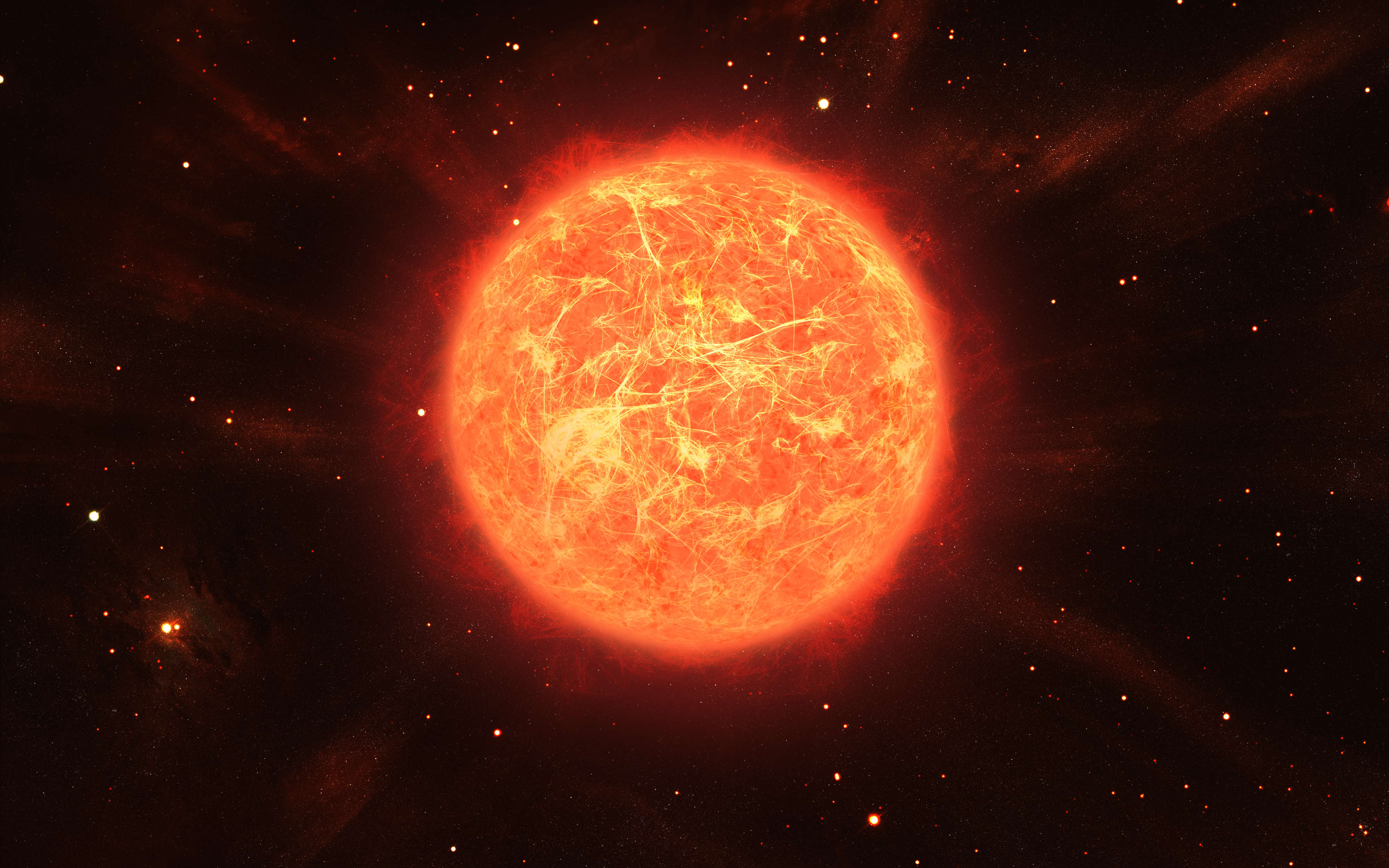Create a free profile to get unlimited access to exclusive videos, sweepstakes, and more!
Zombie parasite stars are eating other stars alive
It's a star-eat-star universe out there.

On Earth, parasites have been devouring unassuming hosts from the inside out for millions of years, but not all parasitic entities are necessarily alive.
Stars can also gnaw away at living victims. There is often stellar parasitism in binary systems, where one star slowly eats away at another as they orbit each other, as if it had been infected by the virus in Splinter that takes over the body of its prey to zombify it into a voracious cannibal. This is possibly why half-eaten red giant stars that aren’t dead yet are showing up in our galaxy. Astronomers from the University of Sydney have discovered less massive or less luminous red giants that were only predicted — but never actually found — until now.
Dying slow and blazing deaths, red giants show what the future of our Sun will look like in another 4 billion years. They are what remains of stars that have burned all their hydrogen and have now become cooler, but red and inflamed. While most stars (with our Sun being a misfit) are part of binary systems, some are more predatory than others. Head astronomer Yaguang Li, who led a study recently published in Nature, and his research team were able to find out how low the masses of these stars are, and prove they had found what they were looking for.
“We used an AI model with 99% accuracy, but a tiny fraction of stars can have the wrong classifications,” he told SYFY WIRE. “When we tried to find more post-mass-transfer stars, we suddenly realized we were looking at some that had gone through binary interactions.”
The red giants that almost eluded the researchers were HB or horizontal branch stars, which can no longer power themselves by the nuclear fusion of hydrogen (since they exhausted it all), so they burn the helium they had previously created from that hydrogen. White dwarfs are the luminous cores of dead stars that are left after their outer layers have decomposed in space. Binary stars are bound to each other by gravity, and as they grow older, star stuff from one can reach the the grasp of the other’s gravity and be ripped away in what is known as a mass transfer. It would be downright gruesome if stars were made of flesh and blood.
Now this is where it gets like Splinter. Just like that virus killed and reanimated human bodies so they could tear the flesh off other humans and grow into even more horrifying monsters, the white dwarf, which is the zombie star in the system, keeps eating the red giant it orbits with.
“We used asteroseismic scaling relations to determine stellar properties,” said Li. “Asteroseismic observations can tell us two characteristic frequencies, which can help us solve for mass and radius to determine whether these were smaller, less massive red giants.”
Seeing red giants that are not nearly as huge or bright as they are supposed to be made Li and his team suspicious. Astroseismology takes a closer look at the oscillations of stars, or movements of stellar gas. Analyzing these movements can tell observers more about what is going on deep inside a star. Using astroseismology along with spectroscopy, which revealed the temperatures of the cannibalized red giants, the astronomers were able to determine the radius and mass of each one. They finally had evidence for very low-mass and under luminous red giant stars.
Most HB stars give themselves away because they appear as a blob on the left end of a hook-like structure, and Li knew what to expect from models of stellar evolution, but what initially confused him was that there were similar bodies on the opposite side. That was almost passed off as a mistake until he and his team realized that this was not an AI error. After they painstakingly went through each of the stars they observed just to make sure there was no glitch, it turned out that those which had unusually low mass or luminosity really were HB stars.
“Our findings suggest the masses and radii of these unusual targets differ from the majority of HB stars, so they must have a very different history,” Li said. “We’ll have a better understanding of this question once we get more spectra of these stars.”


























